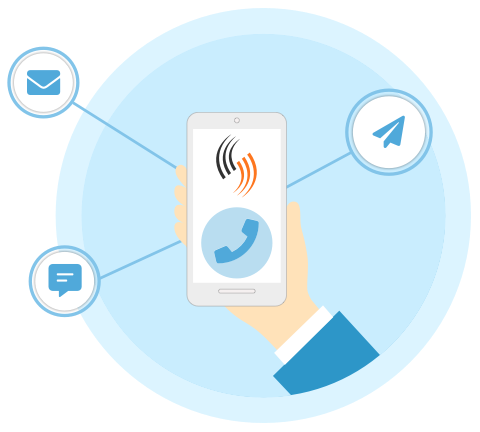94% of American workers in 2021 said they were stressed at work. According to a poll conducted by Dynamic Signal of over 1,000 US workers, 80 percent are stressed out due to their employers’ poor communication habits. These scores are 30% higher than in 2018! Multiple studies and polls tell the same story: modern workers are stressed out at work, and the stress is affecting their sleep, health, relationships, productivity, and feeling of well-being. Consequently, this blog will discuss the effects of employee stress on the organization and how managers can reduce it.
Employee Stress: Causes and Symptoms
Causes

According to an article published by The American Institute of Stress, employees’ most significant stress cause is their workload, followed by personal issues at 28%, juggling work and home lives at 6%, and job security at 6%. Remember that excessive stress can impair your employees’ productivity and performance, as well as their physical and mental health. This will eventually have an impact on both professional and personal relationships. Why do employees take on so much workload? – “Workaholism”.
Workaholism is becoming more prevalent in the workplace. A rising number of employees consider themselves workaholics and work more than the standard 40 hours each week. Workaholism has garnered little attention in the past since it is widely acceptable — and even expected — in most corporate settings. Check out our other blogpost on toxic work environments here. However, it can hurt employee health and well-being, especially when attempting to minimize employee stress at work.
Worse, additional elements overlap with workplace-related stress over which individuals may have little control. Low incomes, excessive workloads, poor peer support, limited opportunities for growth or promotion, and job tasks that are not interesting or demanding are some of these causes.
Effects

A stressful scenario, whether environmental, such as an impending work deadline, or psychological, such as constant fear about losing a job, can create a chain reaction of stress hormones that results in well-timed physiological changes. A stressful event can cause the heart to pound and the respiration to speed. Muscles stiffen, and sweat beads form.
Because it originated as a survival strategy, this combination of stress reactions is known as the “fight-or-flight” response, allowing people to react quickly to life-threatening situations. The meticulously choreographed yet near-instantaneous series of hormone changes and physiological responses aid in fighting off the attacker or fleeing to safety. Unfortunately, the body can overreact to non-life-threatening stressors such as traffic delays, work pressure, and family problems.
So what are the effects of employee stress?
- Illness: Workplace stress is responsible for 70% of doctor visits and 85% of significant diseases (StressManagementSociety, 2016)
- Well-being: 35% believe their workplace harms their physical and emotional well-being (The Marlin Company, 2001)
- Harmful habits: To cope with stress, many employees develop unhealthy habits such as drinking, taking prescription pain medication, and using other narcotics (NCBI, 2017)
- Loss of relationships: 76 percent of US workers reported that working stress impacted their relationships in 2018.
- Burnout and Quitting: Over a quarter of employees risk quitting the following year.
How can Managers help Reduce Employee Stress?
According to the World Health Organization, workplace stress is most common when individuals are expected to accomplish things above their knowledge, talents, and coping skills and do not have adequate support from peers and supervisors to bridge that gap. As a result, It’s essential for managers to spot the signs of stressed-out employees, such as incomplete work, decreased productivity, lower quality of work, and mistakes. By actively looking for employees’ well-being, managers can try the following steps to help reduce employee stress.
Reduce severe workloads.
A hefty task is exhausting both physically and emotionally. Simple, employees have too many responsibilities. A couple of times a month or more, 51 percent of employees feel physically fatigued after an ordinary day’s work. After a typical day’s work, 25% of employees report feeling emotionally exhausted. Employees have too many duties, obligations, and demands to do and not enough time in the workday to complete them all. They may believe they must work long hours to keep up, so supervisors must assist set expectations and model conduct. Here are a few suggestions for managers to be better role models.
Remove Impediments and Clarify Priorities
Begin by identifying any potential barriers to productivity and removing those that have the most significant influence on stress. Then, concentrate on removing office distractions and providing tools your staff may require to be effective. Go a step further and plan frequent meetings with your personnel to provide clear instructions on what is essential and what can’t wait until next week.
Eliminate Low-Impact Tasks

Is there anything your employees perform that isn’t worth their time or effort? Could you remove it from their to-do list? Overburdening your employees’ schedules can bog them down, leaving them stressed and underappreciated. Use one-on-one meetings to learn about their goals and assist them in completing more meaningful tasks.
Lead by Example
If you make it a practice not to overwork yourself, your staff may follow suit. Each week, be careful of your job schedule and workload. Imitate a culture in which it is acceptable to put family, hobbies, or other non-job-related activities over work.
Increase employee job satisfaction.
The typical worker works for 13 years and two months. In reality, it is what we spend the most time doing throughout our lives (aside from sleeping). Can you imagine spending so much time doing something that makes you unhappy? When people are dissatisfied with their jobs, they may perceive them as a burden and a source of stress, pushing them to forego activities they would like to pursue.
Employees believe they can’t spend time with their families, vacation, acquire a dog, see friends, or follow their aspirations because they have to work. Managers may utilize these strategies to unearth these sentiments and push their staff to continue accomplishing their personal and professional objectives.
Recognize Emotions and Provide a Channel for Expression
Early in your employee’s lifespan, assess their career prospects. Consider doing new hire questionnaires after 30, 60, and 90 days to record their feelings at various phases. Employees may be nervous or eager when they first begin, but how does this alter after a few months? At different periods in their careers, employees’ emotions can give insights on improving the employee experience and managing talent risk.
Coach Your Way to a Successful Career
Continually pushing workers keeps the door open for fresh ways to engage and excite them. Collect regular, real-time input about their career aspirations using various methods, such as engagement surveys, pulse surveys, one-on-ones, or performance assessments.
Enhance and expand employee skills and strengths
Your staff has a great deal to give. Spend time learning about your workers’ talents and personal objectives for contributing to the organization. Ensuring each employee can capitalize on their abilities will improve their satisfaction and the overall team potential. Allow employees to expand their skills through job shadowing, mentorship, or professional development.
Enhance team interactions.
Stress levels might skyrocket when you don’t like, get along with, trust, or respect the individuals you work with daily. Poor connections with colleagues may lead to various undesirable outcomes, including anxiety, misalignment, distractions, distrust, and envy. Managers may help their staff develop stronger relationships by encouraging honesty and integrity.
Create an Open Culture and Address Conflict Head-On
Make sure your team members feel comfortable being open and honest. Team members will most likely disagree from time to time. Make sure that you address it quickly, professionally, and transparently.
Create a channel for giving and receiving feedback.

Feedback is an excellent approach to getting critical information from your team while improving team connections. Allow employees to provide feedback to enhance your team members’ responsibility, dependability, and trust. You may give constructive critique when needed, but being a role model teammate to your peers and direct reports implies you’re also listening to their comments.
Facilitate Group projects and non-work team events
Your staff spends a significant amount of time together… working. Allow employees to interact and get to know each other outside of work if you want to build team relationships. Allow your staff to collaborate and rely on one another for reasons other than your sales quota.
Improve employee relationships.
A strained connection with one’s boss can be a significant source of workplace stress. Employees who dislike or distrust their supervisors (or vice versa) are more likely to be dissatisfied with their jobs, let work interfere with their personal life, and eventually quit your firm.
When asked to describe a period when they had a terrible mood at work, more than a quarter of those polled used the phrases manager, management, supervisor, boss, or leader.
Negative emotions at work may quickly snowball, leading to even worse conduct and a toxic workplace. Managers may utilize these suggestions to reflect on and improve the skills required to deal with their staff more professionally.
Ask for Continuous Feedback to Help You Improve Your Leadership Skills
Gather feedback from your workers and leaders on how you might improve as a manager. Take that advice to heart, and attempt to put them into action. Investigate books and articles that offer research and advice on cultivating a good connection with your team.
Conduct Repeated One-on-Ones

Meet with employees frequently to demonstrate that they are worth your time and attention. Inquire about what you can begin or discontinue doing to strengthen your connection with them. The first guideline for conducting one-on-one meetings is to prioritize them. These are occasions for you to learn about your workers’ professional aspirations, personal goals, problems, and challenges and provide helpful feedback.
Learn from Leaders Whom Your Team Admires
Determine which leaders your team admires the most and strive to mimic some of their strategies and approaches. Take it further and locate a leader you admire to coach and build your leadership abilities. They’re likely to want to assist and may provide strategies you can use now.
Enhance working conditions.
The World Health Organization defines health as a good condition of the whole physical, mental, and social well-being. This indicates that a good working environment is free of dangerous situations and abundant in health-promoting ones. During a typical workday, 23% of employees take no breaks, excluding toilet and lunch breaks. Meal breaks last fewer than 30 minutes for 38% of employees.
Employees might feel stressed when their work environment encourages unhealthy behaviors such as poor eating habits, insufficient or irregular breaks, or a lack of work-life balance. A healthy workplace will encourage and promote healthy employee practices.
Encourage Work-Life Balance
Create a team culture that values life outside work. Hunkering down in your office till late at night isn’t always the most incredible method to demonstrate to your staff the work ethic you demand of them. Be a good role model for healthy behaviors and be conscious of how you spend your time and energy.
Make use of walking meetings and natural breaks.
Disconnect your team and engage in a team activity. Taking a break from work is an easy way to refuel and concentrate. Take into account the location of your manager-employee or team meetings. Try a walking or standing arrangement to work your muscles when the weather is favorable.
Start a Team Competition
When you have a support system to aid you, achieving a goal is much easier. Start a fitness or health competition inside your firm or team to encourage good employee behaviors. Include participation awards as well as a main prize for the winner.
Assist employees in working long hours.
Many employees work longer than the standard 8-hour workday. Working long hours is the norm for several shift employees. Others may work longer hours due to increasing workload or insufficient workforce. Long work hours are more demanding and can result in physical, mental, and emotional pain. Employees are less productive and less inclined to adopt good lifestyle choices.

Maintain Employee Motivation
Appreciation is an excellent approach to inspiring and motivating your staff. Find ways to acknowledge staff for their efforts and goal accomplishments. Depending on your industry, your employees may be required to work long, exhausting shifts, which can be discouraging when they see their manager putting in a fraction of the time. Show them you’re just as committed by arriving early, pitching in where you can, and remaining around to assist them in finishing the work.
Allow for Rest Periods
Assisting your employees with their dawn to dark work patterns is critical. However, frequent breaks are crucial for your physical and emotional well-being and can boost employee productivity. Employees should be encouraged to take 5-minute breaks every hour and longer breaks once or twice daily. Lunch and restroom breaks should not be the only time employees can leave their desks or workstations.
Reevaluate Workload

Ensure your employees’ lengthy hours are not wasted on low-impact jobs. If extended shifts are required to finish large projects, ensure that your staff’s labor is worthwhile. Consider deleting or reprioritizing tasks if working long hours becomes regular, especially when it shouldn’t or doesn’t need to be.
How Celayix can help managers reduce Employee Stress
Did you ever consider that effective employee scheduling may significantly impact your business? Celayix’s scheduling software can substantially reduce employee stress and improve employee retention! You may be thinking, how?
Our software will assist you in tracking your time and attendance and providing the balanced schedule that your team requires. Many firms suffer from inadequate scheduling, leading to staff being overworked.
Celayix Employee Scheduling and Workforce Management software Integrating employee scheduling software allow a company to run by utilizing criteria to regulate how its personnel is scheduled. Our Schedule Xpress software will enable you to choose the hours an employee is authorized to work:

- Limiting the number of hours that workers can work each week.
- Allowing employees/sites/services to add qualifications so that no one is out of their depth.
- Allows workers to indicate when they are available and fit to work.
Many managers appreciate the advantages that personnel scheduling software brings. And as an invaluable tracking tool, it provides you with the clarity you need to construct a timetable that is fair to all parties.
So, contact us now if you’d like to learn more about how Celayix may alleviate your over-scheduling and overworking concerns!





